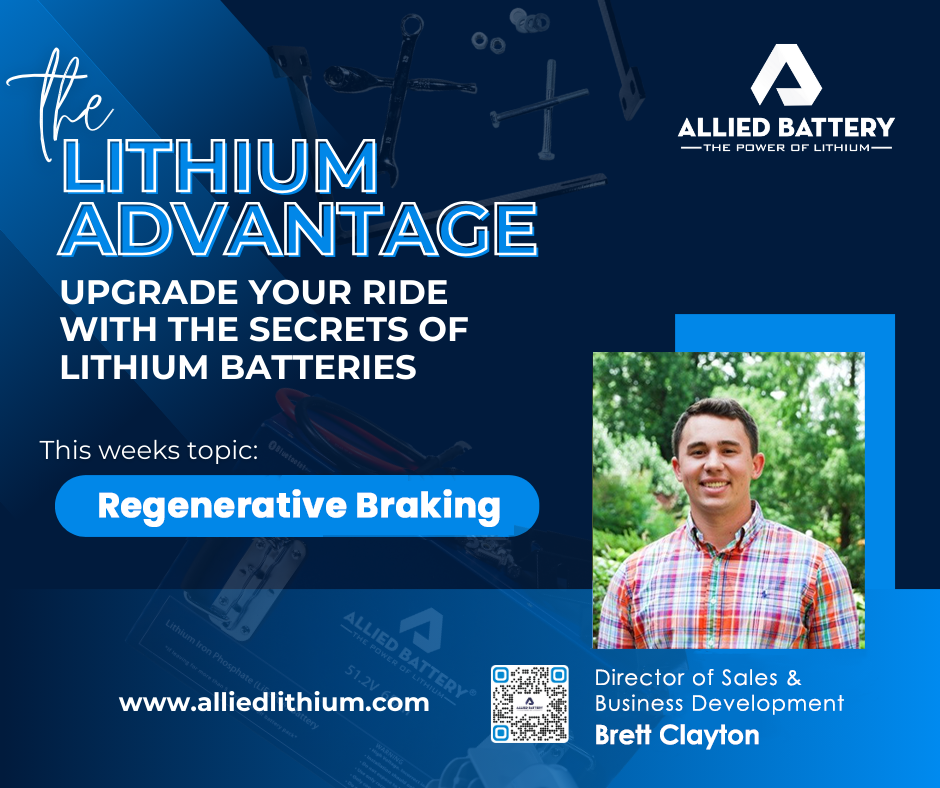Your Cart is Empty
Allied Battery - St. Louis, MO
Menu
Allied Battery - St. Louis, MO
Understanding Re-gen (Regenerative) Braking
2 min read

My name is Brett Clayton and I’m the National Sales Manager for Allied Lithium Battery. A common occurrence in golf carts (and other vehicles/machines) in today’s world is “re-gen” braking. Dealers might talk about it, and you might read different opinions on the internet. Specifically, when buying an EZGO RXV, you might hear this word used often. Updated golf course fleets typically have them nowadays as well, so golfers have frequently experienced it. But what is the purpose? And how does it affect you when it comes to batteries?
Regenerative braking is when the vehicle brakes, the motor converts kinetic energy back into electrical energy and shoots electrical energy back into the battery, effectively charging your cart. The battery acts as a load to the motor regenerating power and absorbs the electrical energy. This means that when you are going down a hill and the Regen breaking is used, it will recharge your battery in small bursts. Which can be good news! Because this will add a small amount of range to your drive. However, if too much power is charged back into the battery, the battery management system (BMS) might recognize this and shut off the battery to protect the pack from damage. If this happens, the brakes will go to full breaking power and quickly bring the cart to a halt. With this being said, always use caution when driving down hills with a full or near full charge at the beginning of your journey.
All Allied Commercial Bank Batteries are Compatible with Regenerative Braking Systems
As it relates to lithium batteries, understand that the BMS in your lithium battery has a threshold of how much voltage each cell can see. If one cell’s voltage becomes too high it will effectively shut off your pack to protect it. With Allied Lithium Battery, our engineers design the BMS to have the capabilities of larger amounts of power being pushed back in compared to other batteries. Understanding and knowing a battery’s capabilities are key when making a decision. It’s always best to read and understand the spec/data sheet and know the max and peak current discharges. Larger amounts of current/amp hours that can be consumed and discharged will always be better for a cart with regenerative braking, like an RXV. We have another blog discussing what max and peak discharges are.
For more information and help when it comes to re-gen braking with lithium batteries, please visit our website www.alliedlithium.com.
Learn more about becoming an authorized Allied Lithium Dealer

